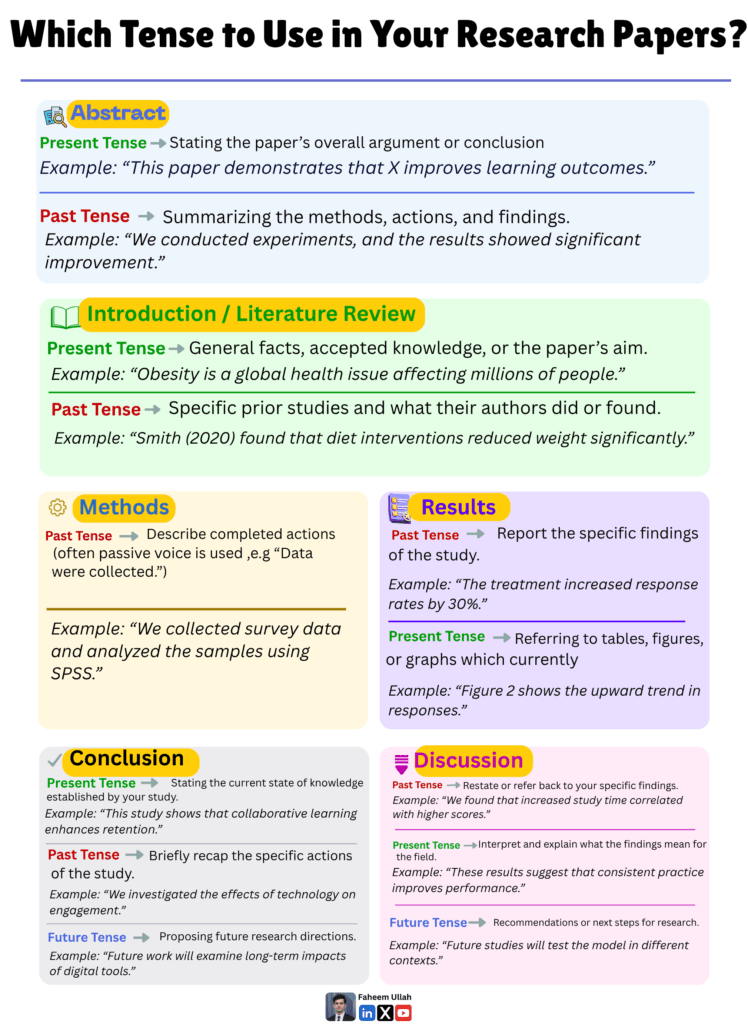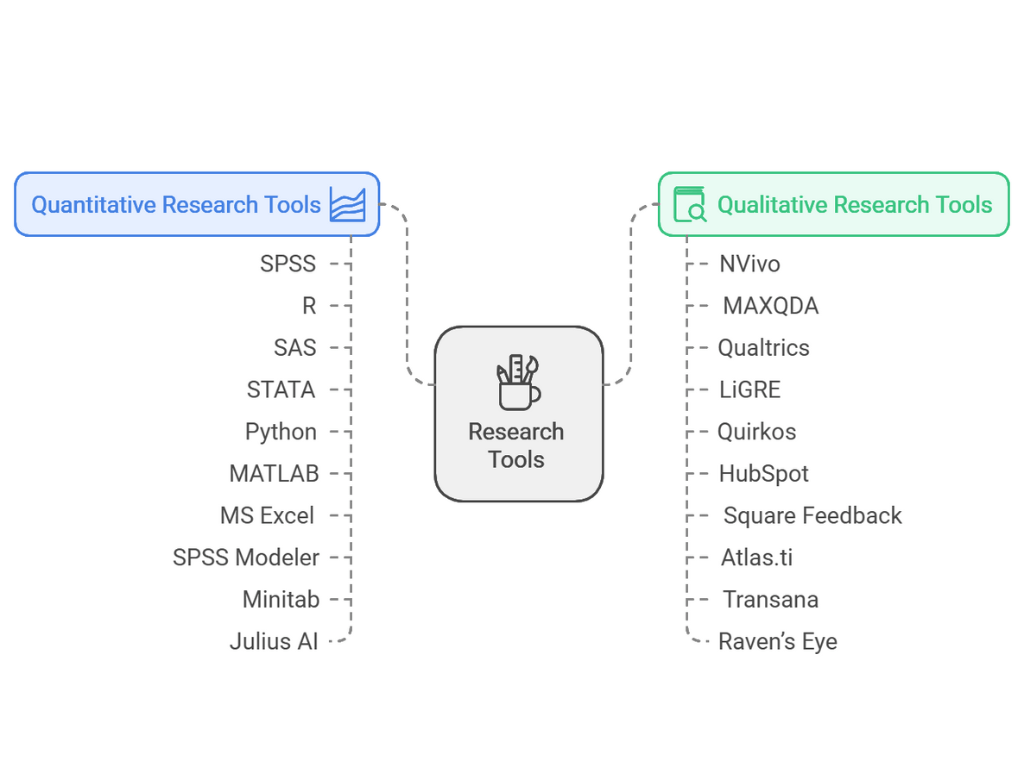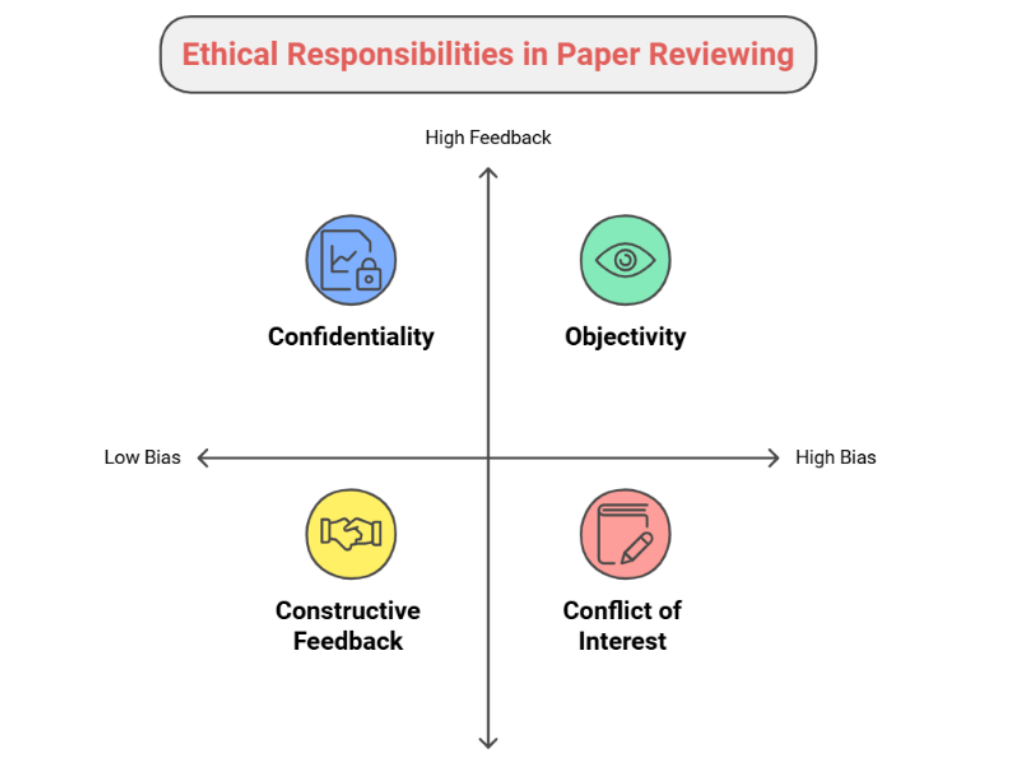
Do you need feedback on your thesis or research paper?
Try Thesify – a tool for seeking feedback on thesis and research papers.
Thesify reviews your thesis like a human expert.
Try Thesify: www.thesify.ai
If you’re writing your first (or fifth!) research paper, you’ve probably asked this question:
“Which tense should I use — past, present, or future?”
You’re not alone.
Inconsistent tense use is one of the most common — and most overlooked — mistakes researchers make.
It might seem like a small thing, but it can completely change how readers understand your paper.
Tense is what guides your reader through time — showing what’s already done, what’s true now, and what’s still to come.
Let’s make it simple.
Here’s a complete guide to which tense you should use in every section of your paper.

1. Abstract
Your abstract is a summary of your entire paper — a snapshot of your work.
You’ll usually mix present and past tense here.
- Present tense → Use it when stating the overall conclusion or argument of your study.
Example: “This paper demonstrates that X improves learning outcomes.” - Past tense → Use it to describe what you did and found.
Example: “We conducted experiments, and the results showed significant improvement.”
Tip: Avoid switching back and forth too much. Start with the present tense to show what your study achieves, then briefly use the past tense to summarize how you achieved it.
2. Introduction / Literature Review
This section tells your reader two things — what is already known and what you are adding.
Use both present and past tense, but for different reasons.
- Present tense → Use it for general facts or accepted knowledge.
Example: “Obesity is a global health issue affecting millions of people.” - Past tense → Use it to describe specific past research.
Example: “Smith (2020) found that diet interventions reduced weight significantly.”
Tip: Think of it this way — what is universally true stays in the present tense; what individual researchers discovered belongs to the past.
3. Methods
The methods section describes what you did, not what you think or conclude.
That’s why it’s almost always written in the past tense.
Example: “We collected survey data and analyzed the samples using SPSS.”
This shows that the work has already been done — it’s factual, completed, and objective.
Tip: Use passive voice when necessary to keep the focus on the process, not on yourself.
Example: “Data were collected from 300 participants.”
4. Results
Now you show what your study found.
Most of this section will be in the past tense, because you’re reporting what you already discovered.
- Past tense → For specific findings.
Example: “The treatment increased response rates by 30%.” - Present tense → For describing tables, figures, or visuals.
Example: “Figure 2 shows the upward trend in responses.”
Tip: If it’s data, write in the past. If it’s a table or figure that still exists, use the present tense.
5. Discussion
Here’s where you explain what your results mean.
You’ll need to use a mix of past, present, and sometimes future tense.
- Past tense → When referring back to your specific results.
Example: “We found that increased study time correlated with higher scores.” - Present tense → When interpreting those findings.
Example: “These results suggest that consistent practice improves performance.” - Future tense → When recommending what should happen next.
Example: “Future studies will test the model in different contexts.”
Tip: Think of this section as a bridge — moving from what you found (past) to what it means (present) and what’s next (future).
6. Conclusion
Your conclusion is where everything comes together.
It’s the “so what?” of your research — and your chance to end strong.
Use all three tenses thoughtfully:
- Present tense → To highlight what’s true now.
Example: “This study shows that collaborative learning enhances retention.” - Past tense → To recap what you did.
Example: “We investigated the effects of technology on engagement.” - Future tense → To suggest directions for future research.
Example: “Future work will explore long-term impacts of digital tools.”
Tip: Don’t end abruptly. Always add one or two lines showing how your research contributes to the field.
Why Tense Matters So Much
You might think tense is just grammar — but in academic writing, it’s much more.
Tense gives structure to your story.
It shows readers when things happened, what’s already proven, and what’s still under discussion.
A well-written paper takes readers on a timeline:
- What we already know (present tense)
- What others have found (past tense)
- What you did (past tense)
- What it means now (present tense)
- What’s next (future tense)
When your tenses are consistent, your ideas flow clearly — like a well-planned story.
When they’re not, readers get confused about what’s done and what’s still true.
How to Check Your Own Paper
Here’s a simple checklist before you hit “Submit”:
- Go through your paper section by section.
- Circle verbs that describe actions or findings.
- Ask: “Is this still true?”
- If yes → Use present tense.
- If it’s something you did → Use past tense.
- If it’s about what you plan to do → Use future tense.
- Make sure each section uses a consistent tense pattern.
- Read it aloud — your ear will catch tense shifts faster than your eyes.
Pro tip: Tools like Paperpal or Grammarly can help detect inconsistent tenses, but always verify manually for accuracy.
Final thoughts
Mastering tense isn’t just about grammar — it’s about clarity.
When you use the right tense, you help readers understand your timeline, your logic, and your confidence in your work.
Think of your paper as a story:
- The Introduction sets the scene.
- The Methods describe what happened.
- The Results reveal what you found.
- The Discussion explains why it matters.
- The Conclusion closes with what’s true and what comes next.
Get the tenses right, and your story will shine.
Don’t forget to read: The Core Skills for PhD Students
Best of Luck..




